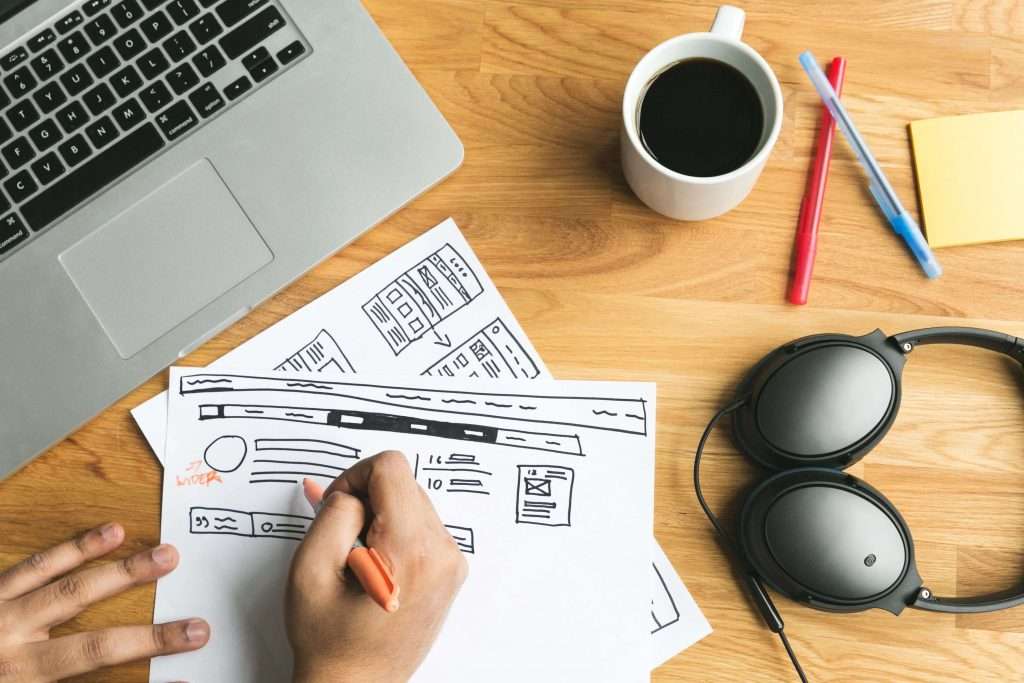Making sales on location at your stationary store is easy: the customer can come and carefully examine products, ask questions about various configurations and order exactly what they’re looking for.
Your online store, on the other hand, doesn’t generate the profits you expected.
You know that there is something that stops a customer from buying online. In the online store it’s not possible to look closely at the product. Some clients might also think that the pictures of your goods aren’t necessarily reflective of the reality. Or, while they might like the product, they may want it in other sizes, colors or shapes. Unfortunately there isn’t an option for this, so then don’t make a purchase and turn elsewhere.
You’ve surely wondered how you can change this situation; how to stand out from the competition and meet the needs of customers. The answer may be to create a product configurator that will help you better present products in the online store through personalization. Get tips that will help you plan the perfect configurator.
Table of contents:
- How to plan building the configurator from scratch.
- What to consider when designing the configurator for the most satisfactory result.
The product configurator can be added to an existing e-store, or you can order a new platform including this tool. It will be necessary to obtain technical information about the tool’s construction to successfully integrate it into an existing e-store or platform. This will include used technologies, which you can get from the developers of the store or the software producer.

How to start the process?
Building the configurator will not only personalize purchases and increase sales, but it will also be a new logistics challenge for your internet business. To get the effect you want, before ordering the product configurator, think about reasons to build it.
What goals do you want to achieve?
At the beginning of the building process you must define the business goal. This will help you to choose the right solutions and develop your online store.
Example goals include:
- better product visualization, thus encouraging sales
- reducing the number of returned goods from customers who received the product and noticed the difference between the one they received and the one offered in the store
- introducing a new product with changing elements
- highlighting the uniqueness of products available in the e-store
- obtaining a competitive advantage if the competition does not have a product configurator
- equalizing sales opportunities compared to competitors who already have configurators in their online stores.
What products will the customer be able to configure?
When sending a query to a software house, it is important to present the industry specifics and describe which products will be available for configuration. You should provide details about the goods and specify their quantity, available types and variants. This will enable the design team to tailor solutions to the emerging configurator.
How to specify the requirements?
Specifying functional requirements, i.e. what can be performed in the configurator and what functions it must have, should be a direct result of the business goal. Based on this, the software house will be able to propose appropriate technical solutions.
The following questions can help you define your requirements:
- What will the client see as a configuration effect?
- Will the product be visible as a 2D or 3D model?
- Which product elements will be editable?
- Can all variants of elements be combined with each other?
- Will the customer order the product immediately after configuration?
You can also indicate an example of the configurator that you would like to model yours on. This can help you determine the functions that your dream configurator should be able to perform. Experienced software house programmers can also add value in the form of innovative solutions, so keep an open mind to their suggestions.
How to visualize the product?
The requirements for product visualization will include the way it is presented. You should start by thinking about whether the goods will be presented in 2D or 3D.
When choosing a visualization method, you should take into account the specificity of the product and decide which option will bring show the product best and bring the most benefits. You can provide models or graphic visualizations to the contractor or commission creating them.
Think about whether:
- the customer will be able to observe product changes in real time, immediately after choosing one of the available parameters
- the changes will be visible only after selecting all the variable elements and clicking the button confirming the selected parameters

How to specify parameters?
Parameters, which are forms of configurator functionalities, will depend on the product we offer: others will concern shoes, and other sofas or plexiglass.
The parameters that we can take into account are, for example: color, size, width, thickness, number of holes, type of available materials. To every variable you can assign any number of values. For example, two colors to choose from — white and black — or five thickness parameters: 1 cm, 2 cm, 3 cm, 4 cm, 5 cm. Identifying these elements will be important at the solution design stage.
You should also consider whether some parameters will not exclude others. This could be due to the size of individual parts not matching, or limitations of production capabilities.
At the stage of writing requirements, you can also specify the method of selecting each parameter. In the case of colors, this could take the form of selecting an icon of the appropriate color. For the thickness, this could be done by selecting a point on a sliding scale. Another important aspect is also whether the price of the product should be visible immediately, or only after the product is added to the basket. Consulting the software house regarding the proposed parameters will allow you to design intuitive solutions to facilitate the purchasing process.
To make sure that all possible visual parameters have been taken into account, you can try to create the entire configurator view. It will be a mock-up, which will show what the user will see on the screen of the device. You can include preparing mock-ups in your order. You can also do it yourself in the form of a freehand drawing or design it in a program for creating mockups.
Will the customer be able to buy the product immediately after configuration?
After configuring the product, the customer may be able to purchase or may contact the company for a quote by clicking the “ask for offer” button. If the customer is able to buy the product right away, you should decide on what parameters the price will depend on. This means that you need to specify at what values the fee will change and create calculations for them. For example, the price may change based on length, weight and color. These will be the basic rules of calculation.
Consider whether the price difference will be visible immediately after changing the parameter, and whether you will include discounts when buying more items. If so, set the value of the proposed discount for specific quantities of products ordered. Will the price also include other discounts, such as periodic promotional campaigns or loyalty programs? These will be additional calculation conditions that will allow you to maintain the current strategy of discounts and rebates offered.

Will the configurator be connected to another program?
The configurator can also send the performance parameters of a given product to the appropriate program, such as one that operates a production machine. Information about the software must be provided to the company building the configurator.
The development team will assess the feasibility of system integration based on the technical information of the software you use.
Can new configurator parameters be editable?
If you want to add new parameters yourself, then the development team can implement such a solution. You will be able to add new values to existing parameters or create new ones from the administration panel without having to order additional work. You will gain more flexibility in shaping the offer, but this will increase the initial implementation costs.
However, if you do not use this option, you can outsource adding new functions to the software house as part of the tool development.
Summary
Product configurators create many opportunities to develop e-businesses by creating personalized goods. It is important that the configuration of the product is intuitive and that every user can change its parameters. Defining the goal, or the need to implement the configurator will help determine what you expect from this tool and future plans for its possible development.
The software house can help you carry out the analytical process related to determining the requirements at the beginning of cooperation. This will be especially important if you plan to launch a new product and sell it within a certain period of time. The software house will also help in setting the priorities for implementing functionalities and the possible staging of work in the budget.
When submitting a query about the configurator, you should first consider the expectations for it. Make sure your query contains the most important information:
- do you already have an online store?
- what types of products you sell, and which ones will be configured
- do you have a product database?
- will the product be visualized in 2D or 3D?
- do you have product visualizations? If so, provide them to the software house.
- which parameters will customers be able to change when configuring the product?
- will the customer be able to buy the product immediately?
- have rules for calculating prices for products been created?
- will the configurator will be connected to another program?
At Dotinum, we have a programming department that is able to make a complete online store and configurator. We can work on the provided product photos or prepare their 3D models. We will make sure that the configurator is as easy to use as possible, works quickly and is convenient to use on mobile devices.